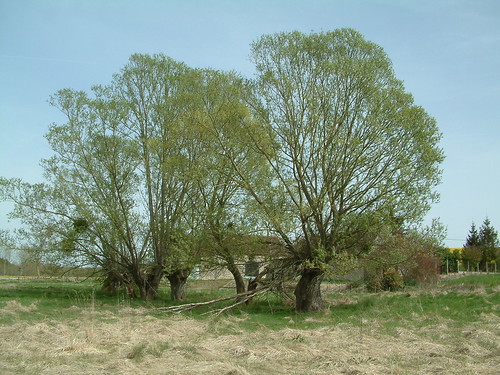As trying to write two blogs on a very similar subject meant that the weaker blog kept getting neglected.... and that this blog has turned out to be much more about our few acres of meadow and the Aigronne valley between the two Pressigny villages...
than about the whole valley and places further abroad...
I made the decision to incorporate the weaker blog into the stronger!!
These are the first two entries combined, with a few alterations / corrections...
All will be in this "willow green" type to distinguish between the entries.
 |
| Our maples |
With two hectares of land... five huge old willows.... where does one start?
You put your "Art 'n' Soul" into it.... of course!
These are occasional posts of what we are doing [and why we are doing it] in the way of land management here at La Forge
 |
| The five old pollards |
These are the original five willows that formed part of the boundary of the bief.
The rotted out stumps of some of the rest remain...
a hazard when one walks the bank.
As you can see, these were in desperate need of conservation.
Already, branches had rotted and fallen, trunks split and trees were leaning after their overweight branches!
The work began in earnest in Winter 2005, with 30" bowsaws...
a big error on my part as the sap was frozen and blunted the blades very quickly.
A Stihl chainsaw was later purchased to speed up the work and make the cuts cleaner and safer!
But trying to fell leaning, frozen timber...
especially willow, which breaks unpredictably, is dangerous.
You need to take time to study the line of fall and care, especially when ten foot off the ground, about how the butt end is likely to move.
I got very good at fireman's slides down the ladder!
If you look at the willows in the picture on "A bit about the site" you will see them near the end of the longère...
only one was left to be pollarded** [they are called tetards in French]....
but you will see that they are quite a way away from the bief.
This, we think, is because they were planted to skirt the back of the forge at this point, sheltering it from northerly winds.
And as Pauline has recently discovered from early maps... a long narrow building following the alignment of these old "trognes"... the local dialect word for a tetard.
The forge itself, sited on the meadow side of the bief, would have been a bloomer furnace...
a tall chimney-like stove, filled with the raw materials...
charcoal, lime and ironstone...
and then fired.
The undershot water-wheel would have powered bellows to raise the temperature of the firing and possibly a drop hammer to beat the metal from the slag.
The molten metal was drawn off at the bottom.
A very inefficient process, judging by the weight of the slag to be found on site.
We will be writing more about the forge and the Touraine Iron Industry on the Following others' Footsteps blog in the future.
The intention is to recreate that original line of willows.
However, our neighbour Richard owns the bief and has a four metre right of access along the north bank for maintenance work.
To respect that access we are planting the line five metres back from the bief.
Other corridors have been planted to help wildlife move in safety.
Further corridors and clumps will be planted, to be managed on a cycle of five to twenty years... depending on the crop required and the wildlife to be supported
** The view from above must date from about 2007/8, as the orchard is visible on the south bank [the pretty pattern of mowing at the north-west end of what has now become the growing field.]



.jpg)






3 comments:
Don't remind me about falling willow branches... I had to jump off the ladder when one decided it would spring back up from the ground and try to knock me off... as you point out you need to be very careful!!
Your maples are beautiful,,,remind me of our days in Vermont.
Every time I see willows, I think bees. Are they saule marsault (Salix caprea)? Mine is a the pussy willow stage and will be buzzing with pollinators soon. Beautiful and useful trees. Amelia
Post a Comment